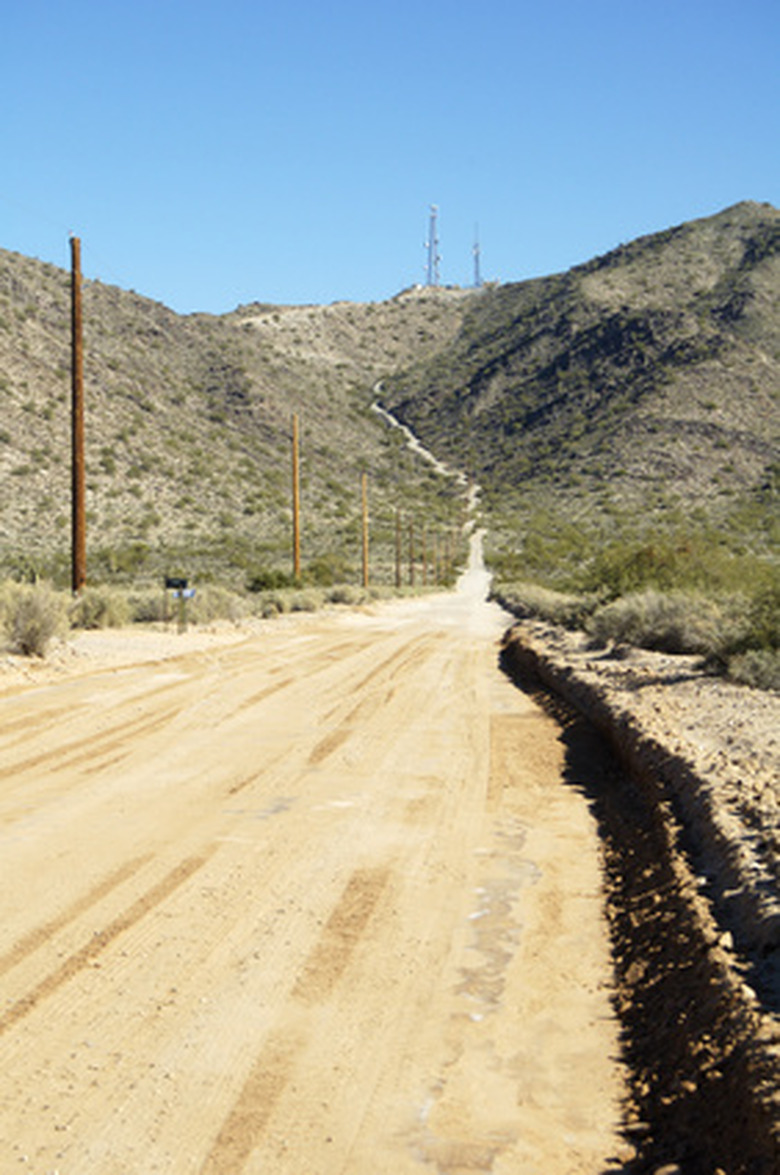How To Calculate Percent Slope
The concept of slope is perhaps more familiar to you in everyday language than as a formal term in mathematics. In fact, they refer to the same thing: a change in vertical position accompanying a change in horizontal position. If you are moving along with no change in your elevation (i.e, vertical position with respect to some fixed reference point in a coordinate system), you might remark that there is zero slope along your path.
As is often the case in the natural sciences, a term with a general or even poetic meaning in everyday language has a very specific definition in practice. In this case, the slope of a line on a graph is its rise divided by its run, which itself may not mean anything yet. The percent slope in turn is an easy arithmetic step forward from the value of the slope itself.
What Is the Slope in Math?
What Is the Slope in Math?
On a standard coordinate system in two dimensions, changes in horizontal (left-right) position are indicated by a change in the x-coordinate, and vertical (up-down) changes are accompanied by changes in the y-coordinate. The difference between the final and initial y-values divided by the difference between the final and initial x-values is called the slope, often designated by m.
Importantly, the sign of the changes must be preserved. This is because slopes can be positive or negative. A positive slope is associated with lines that move upward with respect to the horizontal with x-displacement, while a negative slope is associated with lines that move downward with respect to the horizontal with x-displacement.
- One common slope formula is **m = (yf− yi)/(xf− xi)**, where the subscripts i and f denote initial and final values respectively.
Slope Calculation Example
Slope Calculation Example
**Example:** An ant moves from the point ( −4, 5) to the point (2, −7). What is the slope of the line between them?
Applying the formula above gives
( (−7) − 5)/(2 −(−4)) = −12/6 = −2
Slope vs. Percent Slope
Slope vs. Percent Slope
Example: What is the vertical drop of a 2 percent slope in feet over a horizontal distance of 150 feet?
First, solve for the slope in decimal terms, bearing in mind that percent is just 100 times the original number:
Percent slope = 100(rise/run); −2 = 100(rise/run); (rise/run) = −2/100 = −0.02
Thus if (rise/run) = −0.02 and the "run" is 150, the "rise" in feet is actually a drop: (−0.02)(150 feet) = 3 feet.
The quotient (rise/run) has a specific meaning in trigonometry. It is the tangent of the angle between the sloping line and the horizontal (x-axis). In a right triangle, this quotient is written "(opposite side/adjacent side)" and is abbreviated tan.
Percent Grade
Percent Grade
Perhaps you have heard or seen the term percent grade. This is usually encountered in a transportation context and means the same thing as percent slope. Interstate highways in the United States often feature signs warning of upcoming steep descents and note this with "6% GRADE" or similar signage.
**Example:** Say you drive up the Mount Washington Automobile Road in the northeastern United States to check out the fall foliage in the valleys below. The road from the base of the mountain to the summit is 7.6 miles long. A sign at the base in Gorham, New Hampshire, indicates that the road has a 12 percent grade. If the top of the mountain is 6,288 feet above sea level, what is the approximate elevation of the start of the road?
You know that (rise/run) = 0.12 and that the "run" is (7.6 miles)(5,280 feet/mile) = 40,128 feet. Multiplying this by 0.12 gives 4,815. Thus the road starts at approximately (6,288 − 4,815) = 1,473 feet above sea level.
Slope Percentage Calculator
Slope Percentage Calculator
See the Resources for an online tool that converts between slope and percent grade, with degrees used for the angles if desired.
Cite This Article
MLA
Beck, Kevin. "How To Calculate Percent Slope" sciencing.com, https://www.sciencing.com/calculate-percent-slope-5985079/. 1 February 2020.
APA
Beck, Kevin. (2020, February 1). How To Calculate Percent Slope. sciencing.com. Retrieved from https://www.sciencing.com/calculate-percent-slope-5985079/
Chicago
Beck, Kevin. How To Calculate Percent Slope last modified August 30, 2022. https://www.sciencing.com/calculate-percent-slope-5985079/
